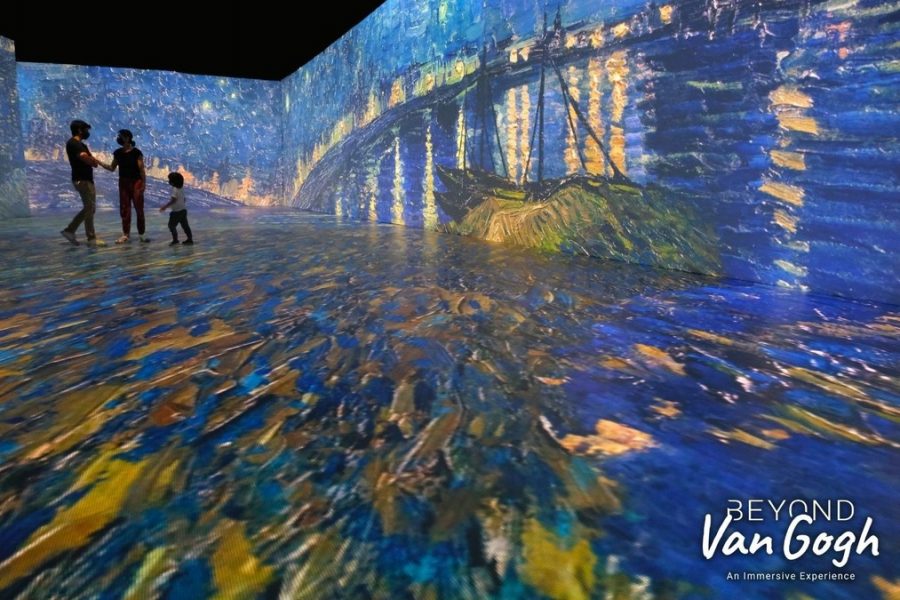Before you see Van Gogh, know about the 2 Jews who “discovered” him
Beyond Exhibitions
BLOCKBUSTER BEYOND VAN GOGH: THE IMMERSIVE EXPERIENCE COMING SOON TO ST. LOUIS! REGISTER NOW TO GET FIRST ACCESS TO TICKETS BEFORE THEY GO ON SALE TO THE GENERAL PUBLIC www.vangoghstlouis.com (CNW Group/Beyond Exhibitions)
Published October 10, 2021
Few artistic masters are as captivating as Vincent Van Gogh. We are not only captivated by his work, but the man himself, as his “reputation” definitely precedes him, in form of legend, romance, and tragedy. His work is mesmerizing with swirls of color juxtaposed with the often dreary, lonesome subjects that he would capture.
Yet, Van Gogh’s paintings have an approachability, while offering a feeling, and sense of place? Whatever the reason his work touches you, it is clear that van Gogh has entered the 21st century as a brand name first and an artistic figure second.
Inna Rogatchi is an internationally acclaimed writer, scholar, artist, art consultant, film-maker, and the author of widely prized film about Simon Wiesenthal The Lessons of Survival. Last year, she documented Van Gogh’s Jewish connections dating to just six months before the artist’s passing in 1890. According to Rogaachi, the first ever positive critical opinion of Van Gogh’s work, while he was alive, came from the Jewish Dutch artist of Joseph Jacob Isaacson.
“Isaacson, who was a deep and well educated person who specialized in Jewish mysticism, realised the merits of Vincent’s art and wrote about it in “The Portfolio” art magazine.”
“Who is there that conveys, in form and colour, the magnificent, dynamic energy the 19th century is against becoming aware of? I know one man, a lone pioneer, struggling on his own in the depths of darkest night. His name, Vincent, will go down to posterity. There will be more to be said about this heroic Dutchman in the future.”
ADVERTISEMENT
Sadly, according to Rogatchi, such praise for Van Gogh was rare while he lived, and it would be Jews later on who would catapult his work into the stuff of legends.
It would be during an exhibition of his work, 11 years after his death that the world would really become aware of his genius, thanks to a Jewish family and a Jewish art dealer.
In March of 1901, a German Jewish art dealer named Paul Cassirer arrived in Paris to see an exhibition of Van Gogh at the Jewish owned Bernheim-Jeune Gallery. Cassirer traveled to Paris after reading an article written by Julius Meier-Graefe, a German Jewish art historian who would later write a facinating biography of Van Gogh.
“Meier-Graefe has noted and understood Van Gogh as no one else has done before him, and it is largely thanks to him that reading public in Germany received his deep and brilliant appreciation that has really made Van Gogh known in Europe,” wrote Rogatchi.
Cassirer was enamoured by Van Gogh the second he walked into to the Bernheim-Jeune Galleries. He immediatly arranged to “borrow” five Van Goghs and returned to Germany. He would then spend the next 25-years pursuing Van Gogh’s paintings while building the artist’s appreciation and fame.
Just before the start of World War I began, Cassirer had 14 Van Goghs on exhibition in his Berlin gallery, and thank to his efforts Van Gogh’s fame evolved, first in Europe and than world-wide. By 1914, according to Rogatchi, “German collectors, largely, and some museums, as well, owned as many as 120 oil paintings and 36 drawings of Van Gogh, the master about whom nobody heard a bit over decade back. It was an extraordinary boom which has no precedent in the history of art.”
And two Jews, Julius-Meier0 Graefe, and Paul Cassirer were the reason.
“I think it is the paradoxicality of these great Jewish men’s brilliant minds that allowed them to grasp the genius of Van Gogh,” wrote Rogatchi. “They were so right. There was not and will never be an artist like Vincent Van Gogh. And our deep thank you should go to both of them for realizing the magnetism of the unsolved Van Gogh’s mysteries so early for the sake of us all.”

















